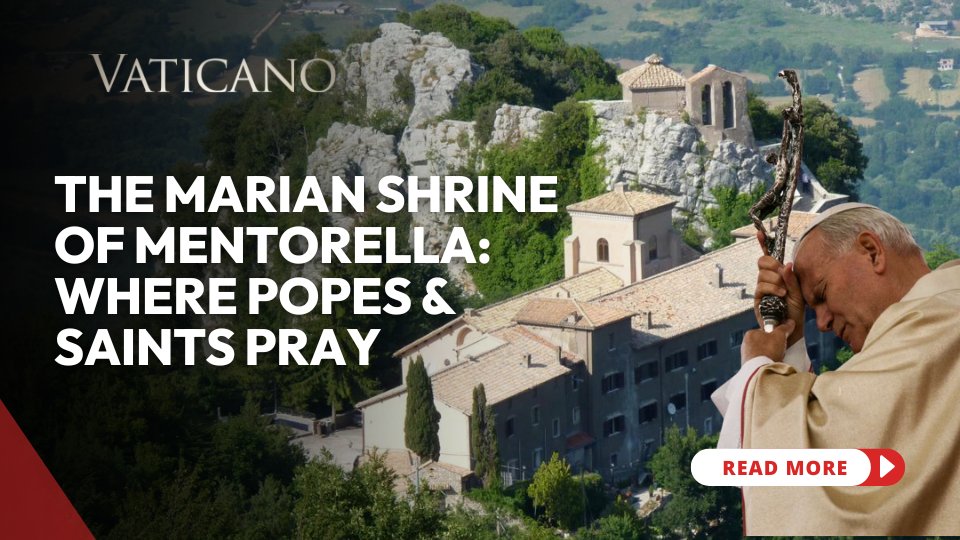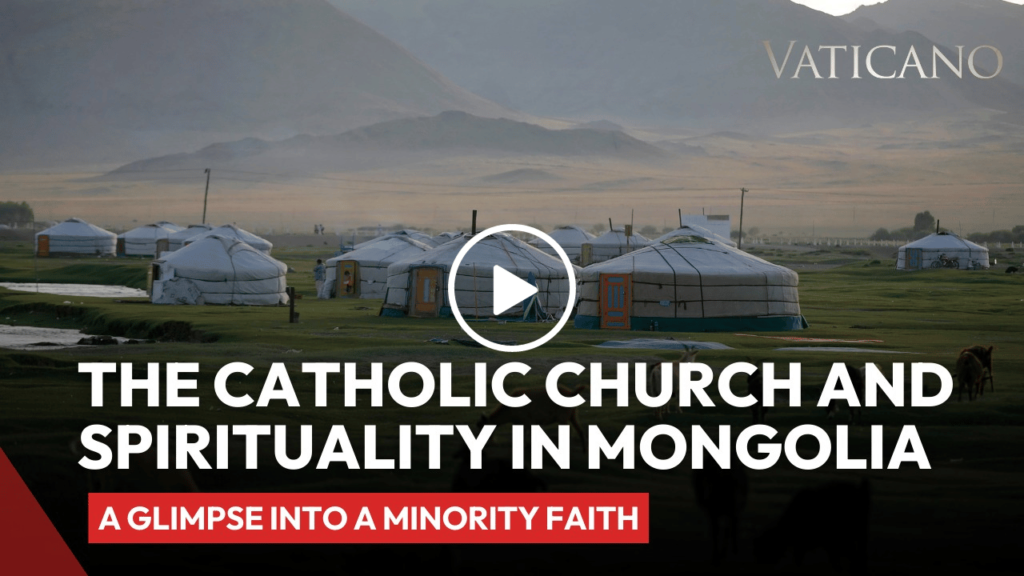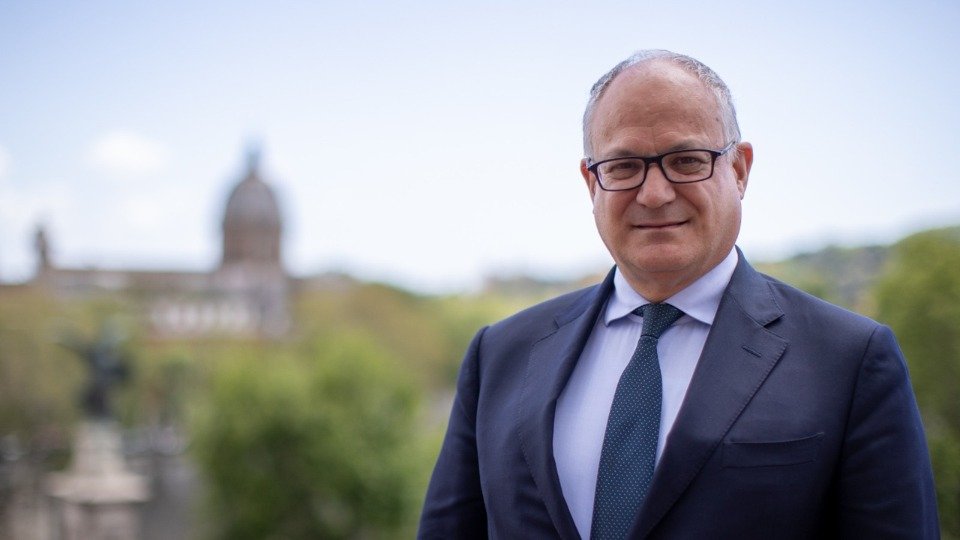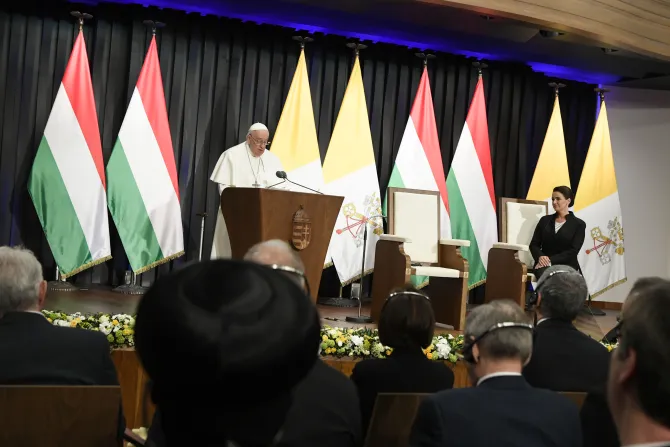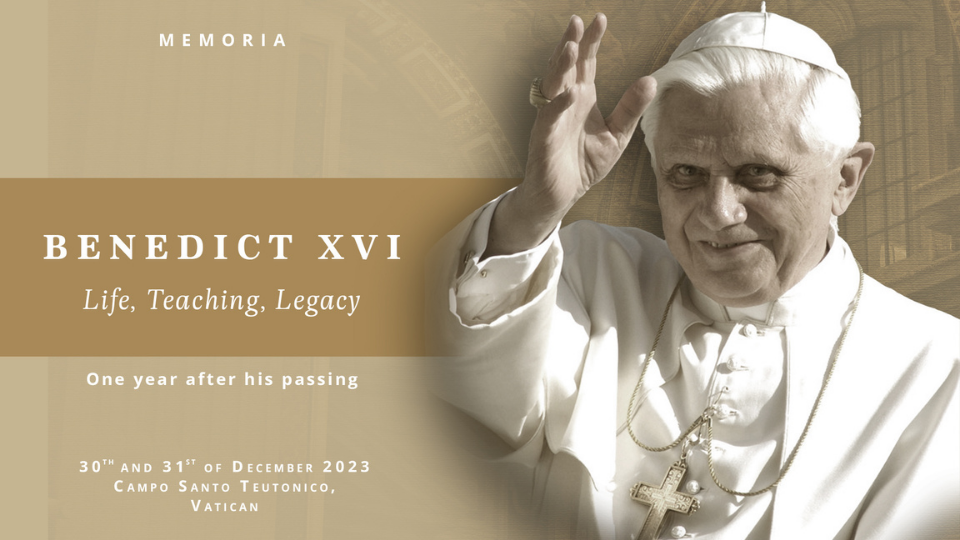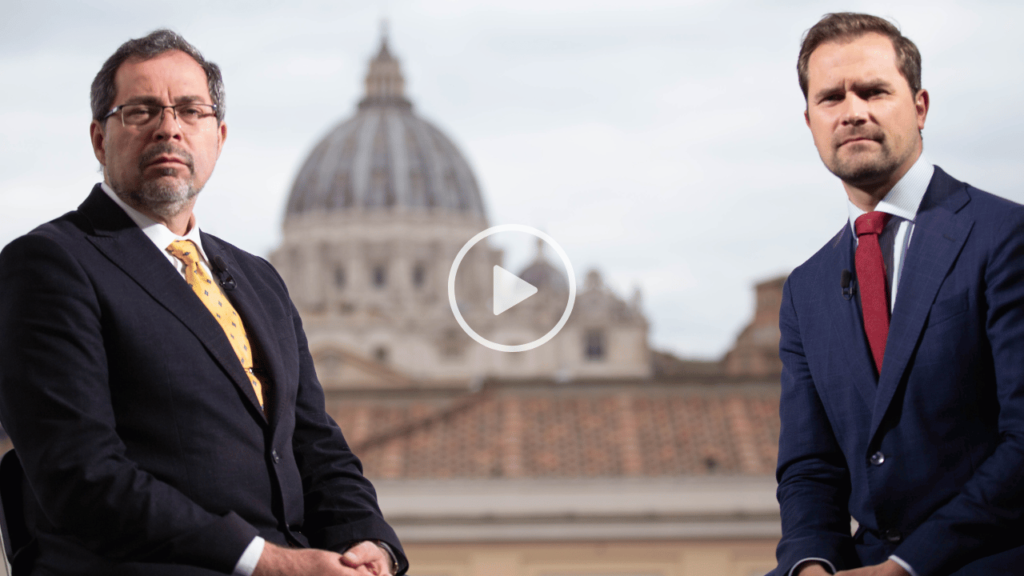“This place, hidden among the mountains, has particularly fascinated me,” Saint John Paul II said, speaking about Mentorella.
“From it,” he continued, “one’s eyes can range over and admire the magnificent view of the Italian landscape.”
“This is a place in which man opens to God in a special way,” the Pope explained. “A place where, far from everything, but also at the same time close to nature, one can speak confidentially to God himself.
“One feels within one what man’s personal call is,” he highlighted. That “man must glorify God the Creator and Redeemer; become the voice of the whole of creation in order to say, in its name, ‘Magnificat.'”
The Pope exhorted that man, “must announce the ‘magnalia Dei,’ the great works of God.”
In this address from October 1978, Saint Pope John Paul II marveled not only at the beauty of Mentorella, an old Marian Shrine located in the mountains at the gates of Rome but also explained how this particular shrine helped him pray and deepen his relationship with the divine.
The Pope delivered this testimony in Mentorella just two weeks after his election.
In fact, on clear days, one can even see the mountain range from the main portal of St Peter’s Basilica.
Before his election, when he had dealings in Rome, Karol Woijtila often came here to retreat into silence and spend days and nights in prayer—more than 3000 feet above sea level. His successor, Pope Benedict XVI, also visited the abbey in the mountains in 2005.
Saint John Paul II was not the first saint to come pray in this place, often compared to an eagle’s nest.
During the time of Emperor Hadrian, who died in 138, Roman General Placidus was hunting on this mountain.
He is said to have had a miraculous vision of Christ between the antlers of the stag he was pursuing. He converted to Christianity and became known as Saint Eustace.
Two centuries later, Emperor Constantine built a church on the spot of the Saint’s conversion.
Dedicated to the Mother of God, Pope Sylvester I consecrated it sometime before 335.
However, the early Christian martyr Saint Eustace is not the only Saint associated with the Mentorella.
Not far from the cliff on which the shrine is built lies Subiaco. There, Saint Benedict of Nursia founded the Benedictine Order and wrote his famous Rule.
Mentorella is said to be one of the twelve monasteries Saint Benedict founded in this region before leaving for Montecassino.
Right next to the church is a cave. Here, the Saint is said to have lived for two years.
Benedict taught his monks to keep death daily before their eyes in order to live without complacency.
In front of the caves are skulls and bones of the Benedictine brothers who have lived here as hermits over the centuries.
The inscription reads: I am the life and resurrection. Be reminded: what you are, we were. What we are, you will be. Here, the bones of the Benedictines are awaiting the resurrection.
This truly is a place where man opens to God in a special way, as Pope Saint John Paul II said, a place where one can speak confidentially to God himself.
Adapted by Jacob Stein

